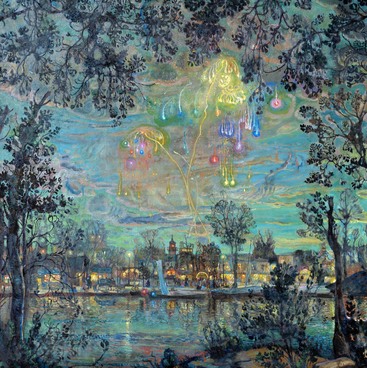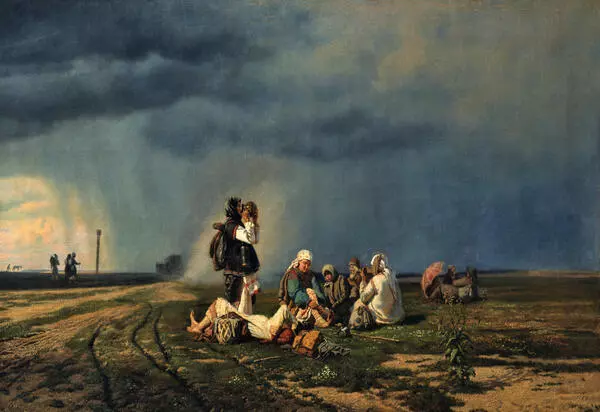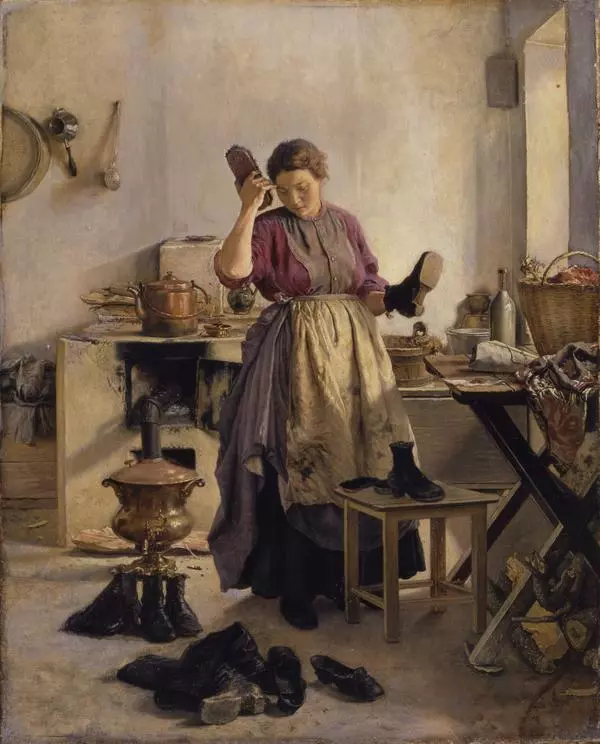Andrei Popov, a Russian master of genre painting, was born in Tula in 1832 in the family of an artist. His father gave him the first drawing lessons, and since 1846 he studied at the St. Petersburg Academy of Arts - first under the supervision of a landscape painter Maxim Vorobyov, and then with a battle painter Bogdan Willewalde.
In 1865, he completed his most famous canvas, Demyan’s Fish Soup - for this picture, based on the famous Ivan Krylov’s fable, he received a small gold medal from the Academy. However, the great prospects that opened up before the artist at the beginning of his career did not materialize, due to his illnesses he wrote less and less, and at the end of his life he almost abandoned his art practice.
Popov is considered a major representative of the first wave of democratic realism: all of his famous paintings, even painted during his studies at the Academy, one way or the other are devoted to scenes from the life of the people. On the painting Troika, completed in 1860, he turned to the peasant theme - here he depicted the game of village boys.
In the foreground he placed three figures of children. A barefoot fair-haired boy in a pink shirt waves a small stick that serves as an imaginary whip, using which he rushes the two boys playing the role of horses. To depict the clatter of savvy hooves, they put on heavy boots. The boy in the role of the central horse is dressed in a torn green coat, and his friend on the left is in a decent urban suit.
This painting entered the museum collection from the Maloye Yurshino estate near Rybinsk, which has not been preserved to this day, and belonged to the noblemen of Luther.
Despite the supposedly frivolous oval format, this picture does not particularly make a joyful impression. Partly this is furthered by the gloomy landscape: the sky is covered with low gray clouds, the joyless autumn landscape seems to be indifferent to children’s fun. Also, depicted on the hedge which is painted down to the smallest detail, the gloomy crows.
Compositionally, the painting by Popov is very similar to the later tragic canvas of the same name by Vasily Perov - it depicts three children who, with all their strength, drag a sled with a barrel of water. Despite the fact that the artists were of the same age, both were interested in folk themes and studied at the Academy of Arts almost at the same time, there is no evidence that Perov had ever seen a painting by Popov - most likely, coincidences in these works are accidental.
In 1865, he completed his most famous canvas, Demyan’s Fish Soup - for this picture, based on the famous Ivan Krylov’s fable, he received a small gold medal from the Academy. However, the great prospects that opened up before the artist at the beginning of his career did not materialize, due to his illnesses he wrote less and less, and at the end of his life he almost abandoned his art practice.
Popov is considered a major representative of the first wave of democratic realism: all of his famous paintings, even painted during his studies at the Academy, one way or the other are devoted to scenes from the life of the people. On the painting Troika, completed in 1860, he turned to the peasant theme - here he depicted the game of village boys.
In the foreground he placed three figures of children. A barefoot fair-haired boy in a pink shirt waves a small stick that serves as an imaginary whip, using which he rushes the two boys playing the role of horses. To depict the clatter of savvy hooves, they put on heavy boots. The boy in the role of the central horse is dressed in a torn green coat, and his friend on the left is in a decent urban suit.
This painting entered the museum collection from the Maloye Yurshino estate near Rybinsk, which has not been preserved to this day, and belonged to the noblemen of Luther.
Despite the supposedly frivolous oval format, this picture does not particularly make a joyful impression. Partly this is furthered by the gloomy landscape: the sky is covered with low gray clouds, the joyless autumn landscape seems to be indifferent to children’s fun. Also, depicted on the hedge which is painted down to the smallest detail, the gloomy crows.
Compositionally, the painting by Popov is very similar to the later tragic canvas of the same name by Vasily Perov - it depicts three children who, with all their strength, drag a sled with a barrel of water. Despite the fact that the artists were of the same age, both were interested in folk themes and studied at the Academy of Arts almost at the same time, there is no evidence that Perov had ever seen a painting by Popov - most likely, coincidences in these works are accidental.




